As I sat on the red cushion a few centimeters in front of the stage, I wasn’t sure what to expect. I must confess that although I have danced during my entire life, this form of dance was complete new to me. Somewhat of a mystery, I might say.
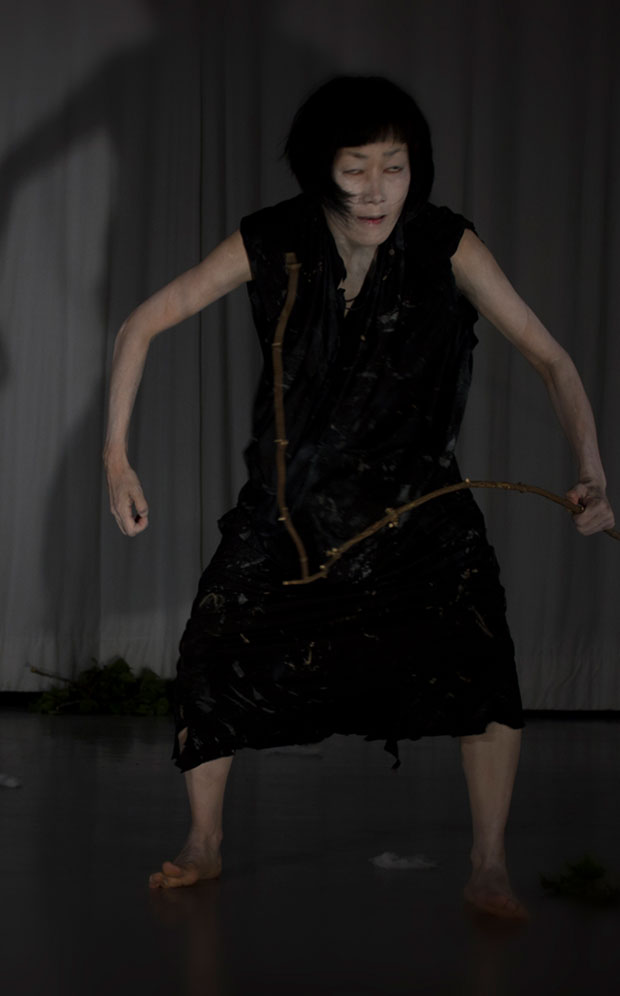
I am talking about Butoh. This Japanese form of dance is mystical, physically demanding and magnetic.
It seemed weird to me, although not entirely impossible that in Japan, this form of dance is somewhat unknown. However, the world kneels at its feet, its choreographers and dancers. And we are right to do so. This is the darkened soul dance of post-Hiroshima Japan.
In case people have forgotten, the USA dropped atomic bombs on the Japanese cities of Hiroshima and Nagasaki in August 1945. These two bombings killed at least 129,000 people. To be more exact, a uranium gun-type atomic bomb called “Little Boy” over Hiroshima on August 6th. Only three days after, a plutonium implosion-type bomb “Fat Man” fell over Nagasaki.
Little Boy exploded 2,000 feet above Hiroshima in a blast equal to 12–15,000 tons of TNT, destroying five square miles of the city.
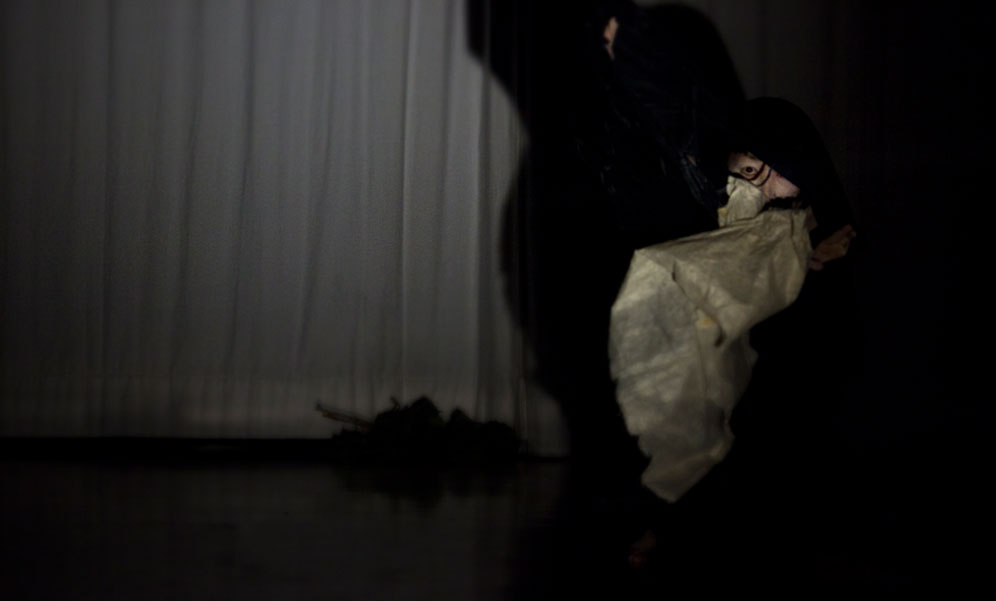
Within the first two to four months of the bombings, the acute effects of the atomic bombings killed 90,000 – 166,000 people in Hiroshima and 39,000 – 80,000 in Nagasaki. Meaning that half of the deaths in each city occurred on the first day.
As it was to be expected, during the following months, large numbers of people died from the effect of burns, radiation sickness and other injuries, compounded by illness and malnutrition.
Needless to say, that the world and especially Japan was never the same.
Butoh is life. – Yukio Waguri –
Something in our humanity or lack there off surfaced that day and Butoh (this obscure dance) is a public act of symbolic transformation. It all begins with the search for a new body, a post war body. In the early days of Butoh streets in Japan were plagued with burned bodies, with survivors, with pain, hurt and lack of understanding.
Some common features of the art form include playful and strong imagery and it is traditionally performed in white body makeup.
In Butoh, as weird as it may be, there are no limits, no ends, it is infinite. It will always continue. The idea: people are not moving themselves, but being moved, pushed and pulled.
BUTOH was conceived into life by the one and only Tatsumi Hijikata. Hijikata thought that a body should not be pushed forward, but be pulled back. Hijakata was only a teenage kid when the bombs fell over his beloved country. His art is not anti war.
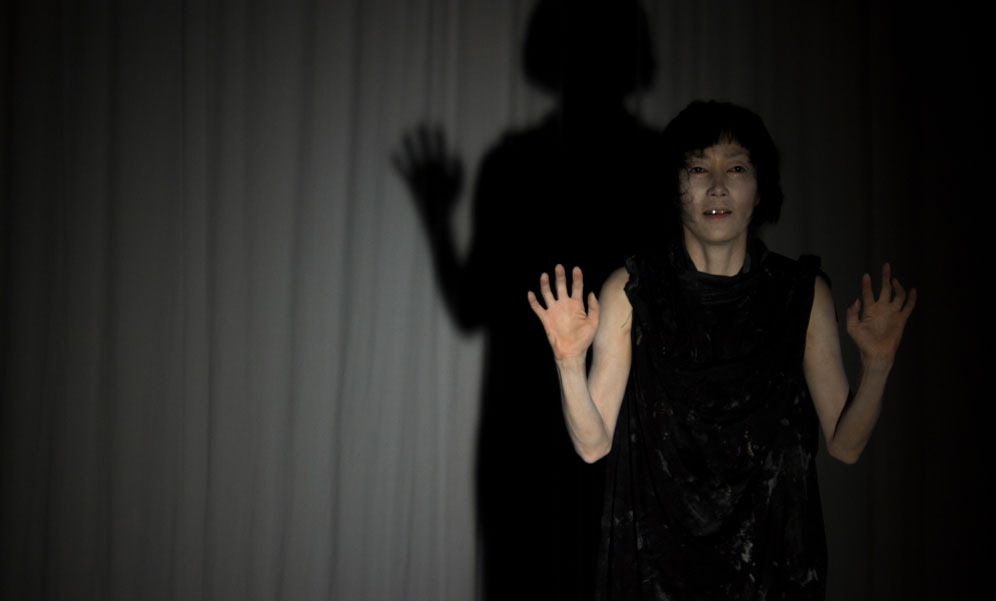
He became a dancer and choreographer as his country layed in ruins, a time when all structures and pre conceived notions could be re invented… A time when change was the only was forward. There was no turning back. Obviously, this two bombings shaped his life and his dance.
Even though the bombings did influence and affect him, it is of great value to understand that his choreography was not a simple outcome of the war/bombing experience. It is somewhat more accurate to say that they were used as “materials”; materials in an inspirational sense to create collective, deep, intense, revolutionary and innovative ideas.
Additionally, it is wonderful to see that all of Hijakata’s dance students have a different approach to this dancing technique. This happens because he continuously changed his teaching methods and encouraged them to dance in their own way.
After his death the methodology of BUTOH was vastly unknown until Yukio Waguri, came along. He grew as a dancer under the choreography of Hijikata. His style tends to use highly elaborate visualizations that can be highly mimetic, theatrical, and expressive.
He made sure the world noticed the core of Butoh. In this dance, whatever is expressed is what is seen as an end result. Consequently, it should not be something that a dancer tries to display. The dancers should try to absorb in order to showcase.
Thanks to Waguri, it has become possible to learn Butoh-fu. However, Butoh-fu is only a part of Butoh. As a matter of fact, Butoh has a second co-founder. He is Kazuo Ohno. The Butoh from Kauzo Ohno is completely different.
It is very important to understand that Butoh-fu was Hijikata’s last creation and it was never finished. After his death, Waguri adopted his method. he managed to do this because of the tachings and notes.
The Legends of Tono
There are many ghosts in Japan, by far not all of them evil. The ghosts are everywhere. They are full of life energy and in movement like the wind. Observing these ghosts from far, looking at the space that’s around them, you sense them becoming one with the landscape.
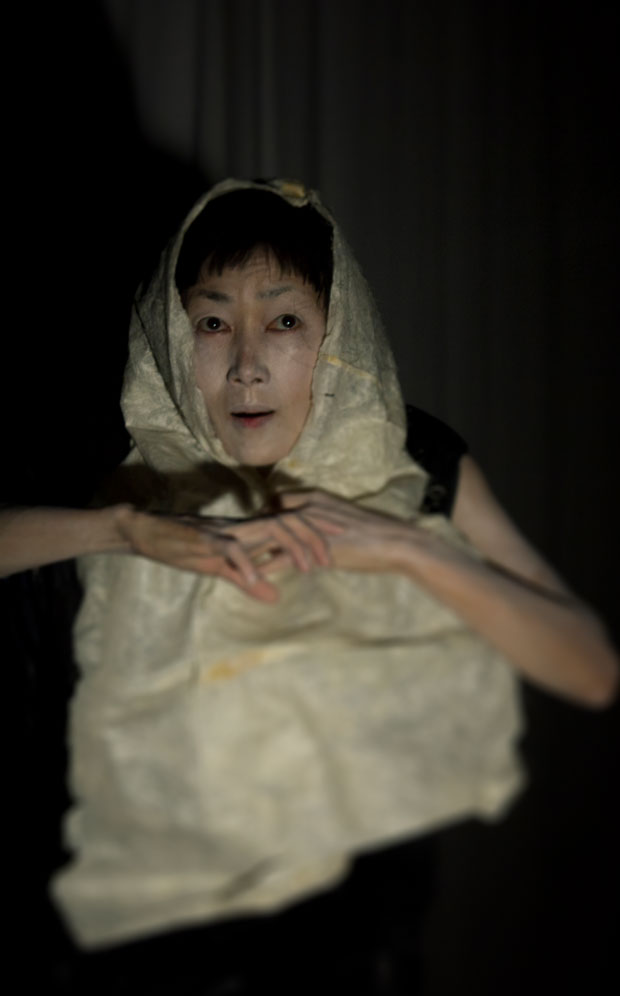
“The Legends of Tono” is a unique choreography that highlights the Japanese supernatural culture. It tells the true stories and legends of the mountain regions of Japan. It includes nine scenes and the main idea is to see how supernatural monsters cross over to our world.
This piece is danced according to the poetic choreographic notation of “Butoh-fu”. It is important to understand that Butoh-fu was transmitted orally by Tatsumi Hijikata. Every word of this notation has its own choreographic meaning for the performer.
Another important point is that Butoh-fu was the last creation of Hijikata and it wasn’t finished. After his death, Waguri has recreated this method. He did this using the information he had obtained from the teacher and from the notes.
This amazing choreography was realized by the dancer Macoto Inagawa/4 RUDE in collaboration with the second generation Butoh – fu dancer Yukio Waguri (everyone who learned directly from Tatsumi Hijikata is considered second generation). A man that true to his dance style is constantly evolving. After dancing for several years he quit and then came back to the stage.
I began wondering many things and I just had to ask.
L.V.A: How did you become a Butoh – fu dancer?
Waguri: I had only one teacher. But then I quit and then I came back.
L.V.A: Why did you come back?
Waguri: It is my destiny. I chose to. I have a responsibility.
L.V.A: Responsibility with whom?
Waguri: Responsibility with myself.
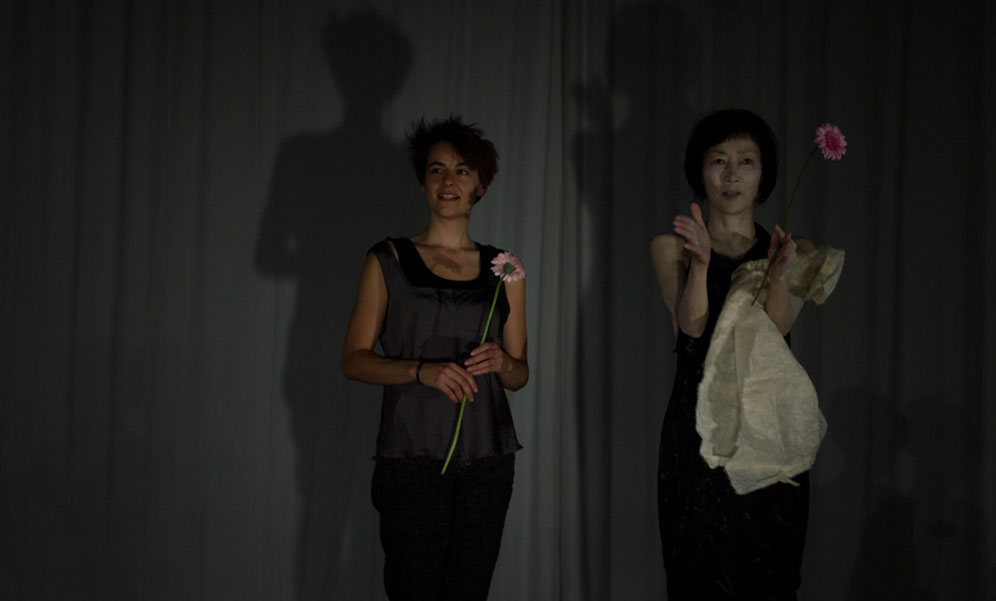
As I spoke to this dance legend I began realizing that he had made some discoveries about life. About our essence… perhaps, he did not hold the answers but some things had been revealed to him as time has passed us by.
It is often said that Butoh-fu texts sound poetic. The truth is that each word represents a specific dance form, movement, and relationship between the body and the space.
Yes, Butoh Fu sounds like poetry, but is the “physical language” that indicates a dancer’s movement and a way of relating with space. “Dancing with words, you need a lot of understanding. For example, if I say you are a flower… what type of flower (rose, white, dark, tulip,etc). So there are many layers, it is very precise… you have to think: how many petals, what season, what color, how it moves with the wind”, Yukio Waguri tells me. As I learned each word suggests a certain movement, a condition or a drawing reference to a dance image, in other words, it is a kind of symbol for the choreographer and dancer to share image and movement.
As I learned each word suggests a certain movement, a condition or a drawing reference to a dance image, in other words, it is a kind of symbol for the choreographer and dancer to share image and movement.
L.V.A: the choreography looks free… is it?
Waguri: Yes. It is good that we are achieving this. The dancer is just to show the choreography, a precise choreography but you thought it had improvisation, so that is good.
A way to explain it is that Butoh – Fu is everything in nature: a flower, a bee, the sun, the wind, everything. That is the reason why words are used as in order to awaken all sorts of physical images and a dance. BUTOH-FU is a method to make you notice how to look at your body. Mysterious words of BUTOH-FU take readers down to the world of imagination in the body, a level which is deeper than that usually used for walking and talking.
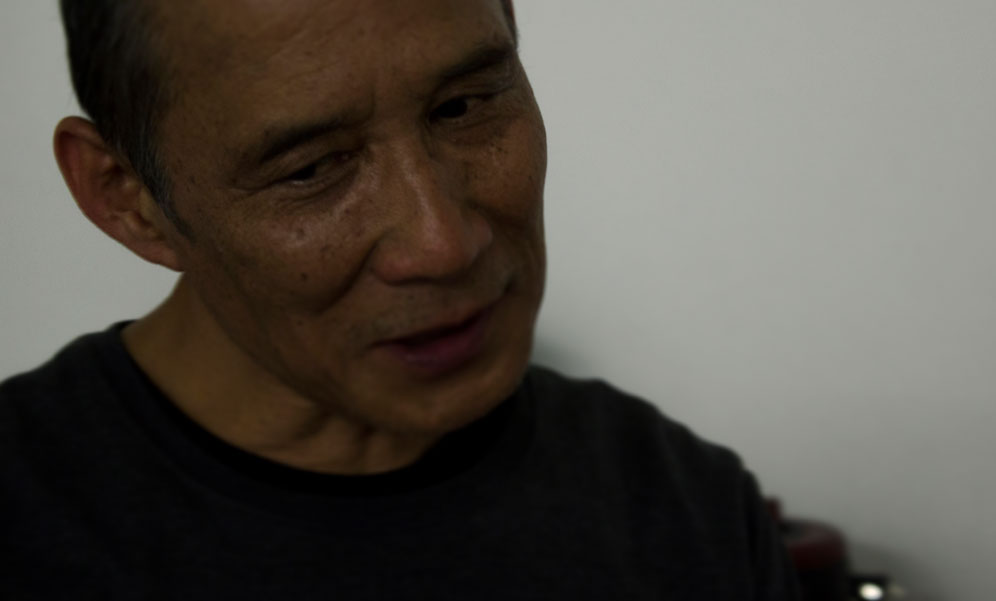
It requires the dancers to have a strict approach on the technique and high level of concentration. Both mind and body work very hard. Butoh is profound. It is in constant development and evolution. This is one of the reasons the darkened soul dance is so magnificent; the diversity of Butoh dances and dancers is limitless.
I declare myself, an absolute fan. In order to make a body do more, to move differently, in ways that are not typical, words may be understood as means to imagine and perceive such movements. So this means that it is like drawing with your body. We are the canvas and the colors. This dance speaks volumes. It goes beyond the everyday understanding of movement and how we relate to it. As Waguri himself told me: “Butoh is Life”…


